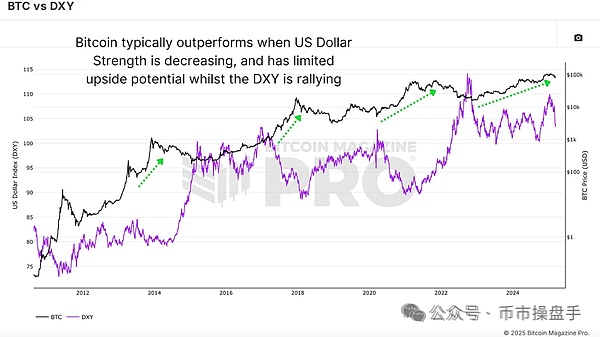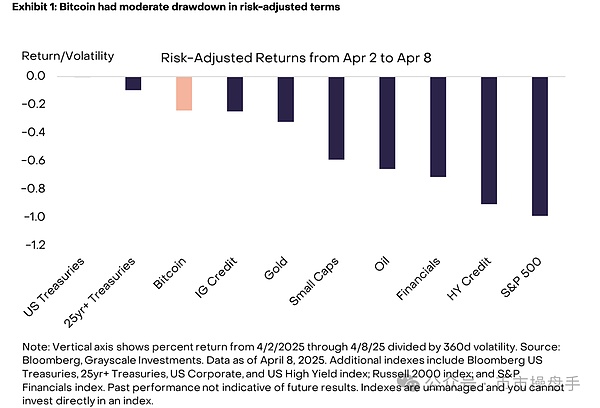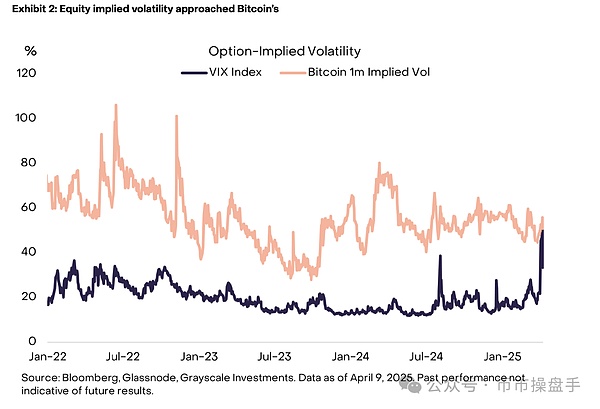
This week, U.S. Treasury bonds suffered the largest single-week decline since the 2019 buyback crisis, and its volatility even exceeded the level of the COVID-19 outbreak in March 2020.What is even more worrying is that the violent fluctuations in the US bond market have put the basis arbitrage funds at risk of large-scale liquidation.This scene is very similar to the situation when the liquidity crisis broke out in March 2020: At that time, a large number of hedge funds were forced to sell other assets to raise liquidity, which triggered a freeze in the repurchase market and multiple circuit breakers of US stocks.So, is the abnormal fluctuation in US bonds a further release of Trump’s tariff war risks or the beginning of a large-scale crisis?
From the trading perspective,Current U.S. debt volatility still falls within the scope of conventional risk release.There are three main reasons:
First, the liquidation pressure caused by the widening of the term spread is still limited to the basis strategy field and has not yet spread to systemic strategies such as CTA trend tracking or risk-parity funds;
Second, the money market remains stable – the balance of the Federal Reserve’s reverse repurchase instrument (RRP) of nearly $500 billion forms a liquidity buffer, and the overnight repurchase rate and SOFR spread continue to be within a normal range of less than 10 basis points;
Third, the 10-year yield fluctuates in the range of 4.25%-4.5%, and there is still a safety margin to the critical point of 4.8% that triggers the duration hedging of MBS investors.Based on these phenomena, the Fed still characterizes the current volatility as the “normal operation of the market self-regulation mechanism.”
As long as no systemic risk erupts, Bitcoin’s benefits in the second phase of the trade war are almost a foregone conclusion.
First, Trump’s tariff policy will significantly weaken the dominance of the US dollar in global trade settlement and accelerate the diversified transformation of the international payment system.As the de-dollarization deepens, the proportion of local currencies such as RMB and rubles will continue to increase, and gold and Bitcoin will become important value stability anchors.For example, in 2022, Russia’s foreign exchange reserves were frozen by the West. In order to alleviate the pressure on the depreciation of the ruble, the Russian Central Bank implemented a fixed-price acquisition policy (5,000 rubles/gram) between March 28 and June 30, which not only successfully stabilized the ruble exchange rate, but its gold reserves surged by 300 tons.
It is worth noting that the volume of Bitcoin transactions in Russia soared 17 times during the same period,A dual-track value storage system of “official gold + private Bitcoin” has been formed.As the United States gradually reduces or even stops the US dollar deficit output, this new architecture may become an important supplement to the de-dollarization process.
Second, the Trump administration may follow the operational model of the 1985 ‘Platform Agreement’, forcing major trading partners to accept the depreciation arrangements for the US dollar through tariff leverage.Although this combination of ‘high tariffs + weak dollar’ policy can enhance the competitiveness of the US manufacturing industry, it will inevitably erode the credit foundation of the US dollar.
Historical experience shows that when the market forms a sustained expectation of US dollar depreciation, hard currency with ‘super sovereignty’ attributes tends to perform outstandingly – between 1985 and 1987 after the signing of the Plaza Accord, the US dollar depreciated 50% and 47% against the Japanese yen and the German Mark respectively, and the price of gold rose from about US$300 per ounce to about US$500, an increase of about 66%. This process led to trillions of dollars in asset redistribution.In the past decade, Bitcoin and the US dollar index have shown a significant negative correlation, so Bitcoin is likely to strengthen in the US dollar downward cycle.

Judging from historical experience, high-quality safe-haven assets need to meet two core standards: significant positive risk premium and controllable price fluctuations.Over the past decade, gold has been the only asset that continues to meet these two requirements, and Bitcoin has been excluded from the safe-haven asset ranks for a long time due to excessive fluctuations in extreme markets (such as the single-day amplitude of 37% in March 2020).However, this traditional perception is being challenged by new market data.The performance of various assets has shown important changes during the period when Trump’s tariff policy triggered market turmoil.
During April 2-April 8, Bitcoin’s risk-adjusted return rate was -0.24, which not only far exceeded S&P’s -0.98, but also higher than gold’s -0.29.This shift suggests that Bitcoin is developing a unique “crisis alpha” attribute—although absolute volatility is still higher than gold, its relative performance in systemic risk events has begun to surpass traditional safe-haven assets.

In addition, although the VIX index soared to its highest point in nearly three years (60), Bitcoin’s implied volatility in one month only rose slightly, and it is still a long way from its historical high.at the same time,There is no obvious correlation between the price of Bitcoin and its implied volatility in the square value option.This shows that the market generally believes that the sharp drop in US stocks has limited potential impact on Bitcoin, and option investors did not use the event to go long volatility, which breaks the view that the market generally believes that Bitcoin is leverage in US stocks in the past.


Looking back, the timing of Trump’s establishment of Bitcoin strategic reserves is by no means accidental – this is not only a forward-looking layout to hedge the credit risks of the US dollar, but also a strategic move to maintain global monetary dominance.However, when the US strategic intentions were gradually seen clearly by the market, US capital had quietly accumulated nearly 30% of the circulating chips of Bitcoin.








